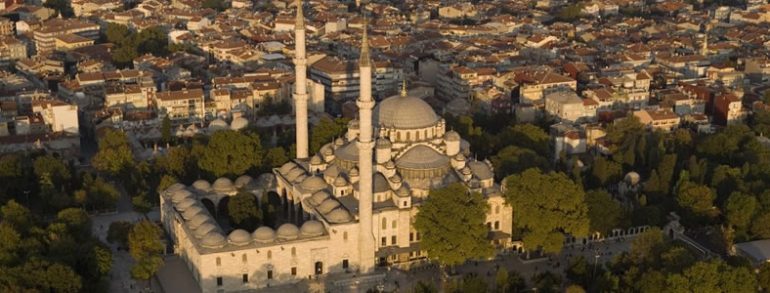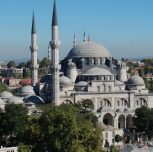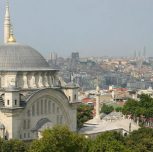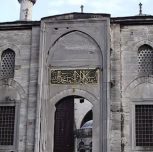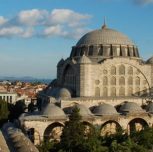The Fatih Complex is the first complex built after the conquest of Istanbul by Sultan Mehmed II in 1453. It extends over a large area and is located on Fevzi Paşa Street. It is a very large complex, which includes a mosque, a madrasah (religious school), a daruşşifa (hospital), a Turkish bath, a bazaar, a library, and the tombs. The complex has lost its original format since its construction in 1463–1470.
It is known that during the Byzantine Period, there had previously existed a church named Havariyyun (Byzantine Holy Apostles Church) located on the site of the current complex. The Fatih Complex is a work of the architect Atik Sinan, andit was later built on ruins of the church. In addition, when examining the architectural style of the complex, it is evident that the complex is very different from the Byzantine architectural style and presents an advanced example of the Turkish architectural tradition.
The mosque, the main unit of the complex, was damaged during several different earthquakes occuring in 1509, 1557, and 1754. After each earthquake, the mosque was rebuilt. However, after an earthquake in 1766 caused great damage to the wall and made the central dome collapse, Sultan Mustafa III (1717-1774) ordered that the present mosque to be built by the architect, Mehmed Tahir Ağa During the mosque’s construction, it the architectural characteristics of the ruined mosque were not fully preserved, and the present mosque was erected by blending the architectural character of that period with the Classical style. The mosque had two minarets each with a single sherefe (minaret balcony) until the 19th century, when one minaret balcony was added and the minarets themselves were raised. The enterence of the mosque is located in an arcaded inner courtyard with 22 domes. The central dome of the mosque, measuring a diameter of which is 26m, rests on four elephant legs and is supported by half and full domes creating the ceiling structure. A Baroque style is visible on the ornaments of the mosque.
The madrasahs (religious schools), the most important units in the Fatih complex, were completed in 1470. They offered education in various fields, and most of the famous scholars of the time period taught lessons at these madrasahs.The madrasahs were substantially damaged in an earthquake during 1766. Eight of the original madrasahs continue to stand today. Recently, they have been restored by the Directorate of Religious Endowments in 1955. Today, they are used for the various purposes.
The original library was located in a separate building which no longer exists today. The present library building was built in 1742, and the remaining collection of the old library was carried to the new library. The existing manuscript collection of the library was also carried to the Süleymaniye Manuscript Library in 1956. Currently, the old architectural fabric of the library is undergoing restoration.
The tombs of the complex include those of Sultan Mehmed II, his wife, Gülbahar Hatun, and Nakşidil Sultan, his mother. Due to the number of earthquakes, they have lost their original shapes. There are many famous individuals buried in the graveyard of the complex. The caravanserai was restored during the 1980s, and new stores, added by the Directorate of Religious Endowments, were rented to new tenants.
Other structures of the complex, which include the tabhane (hostel), Turkish bath and bazaar, were not able to reach our time.


